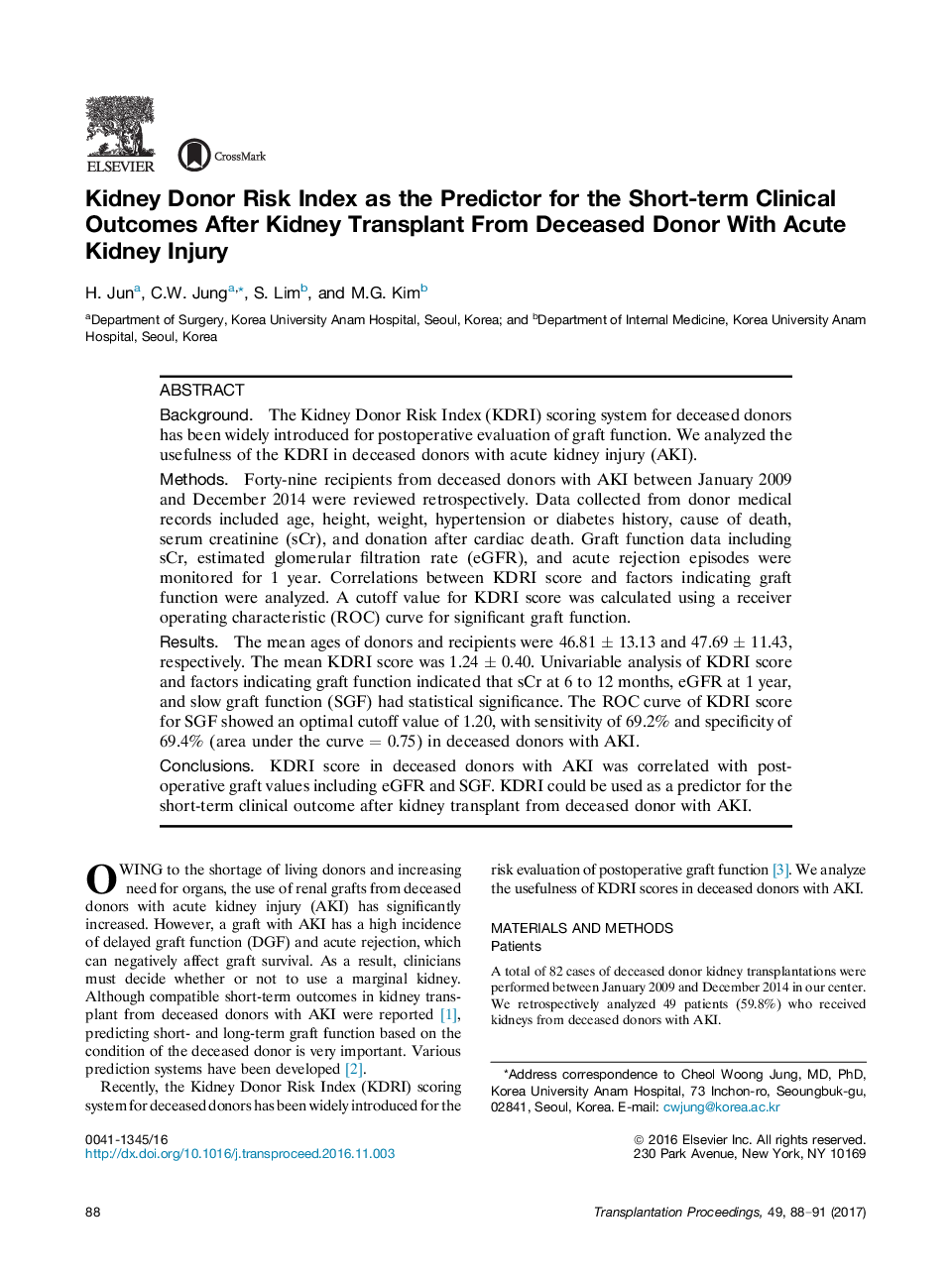| Article ID | Journal | Published Year | Pages | File Type |
|---|---|---|---|---|
| 5729295 | Transplantation Proceedings | 2017 | 4 Pages |
BackgroundThe Kidney Donor Risk Index (KDRI) scoring system for deceased donors has been widely introduced for postoperative evaluation of graft function. We analyzed the usefulness of the KDRI in deceased donors with acute kidney injury (AKI).MethodsForty-nine recipients from deceased donors with AKI between January 2009 and December 2014 were reviewed retrospectively. Data collected from donor medical records included age, height, weight, hypertension or diabetes history, cause of death, serum creatinine (sCr), and donation after cardiac death. Graft function data including sCr, estimated glomerular filtration rate (eGFR), and acute rejection episodes were monitored for 1 year. Correlations between KDRI score and factors indicating graft function were analyzed. A cutoff value for KDRI score was calculated using a receiver operating characteristic (ROC) curve for significant graft function.ResultsThe mean ages of donors and recipients were 46.81 ± 13.13 and 47.69 ± 11.43, respectively. The mean KDRI score was 1.24 ± 0.40. Univariable analysis of KDRI score and factors indicating graft function indicated that sCr at 6 to 12 months, eGFR at 1 year, and slow graft function (SGF) had statistical significance. The ROC curve of KDRI score for SGF showed an optimal cutoff value of 1.20, with sensitivity of 69.2% and specificity of 69.4% (area under the curve = 0.75) in deceased donors with AKI.ConclusionsKDRI score in deceased donors with AKI was correlated with postoperative graft values including eGFR and SGF. KDRI could be used as a predictor for the short-term clinical outcome after kidney transplant from deceased donor with AKI.
